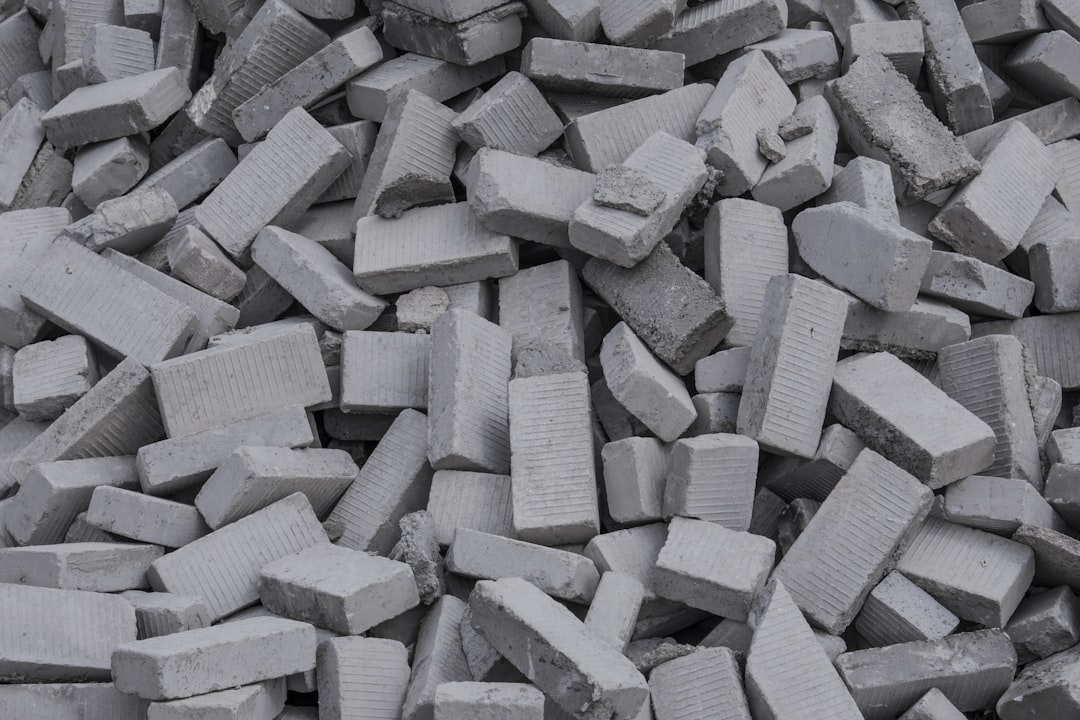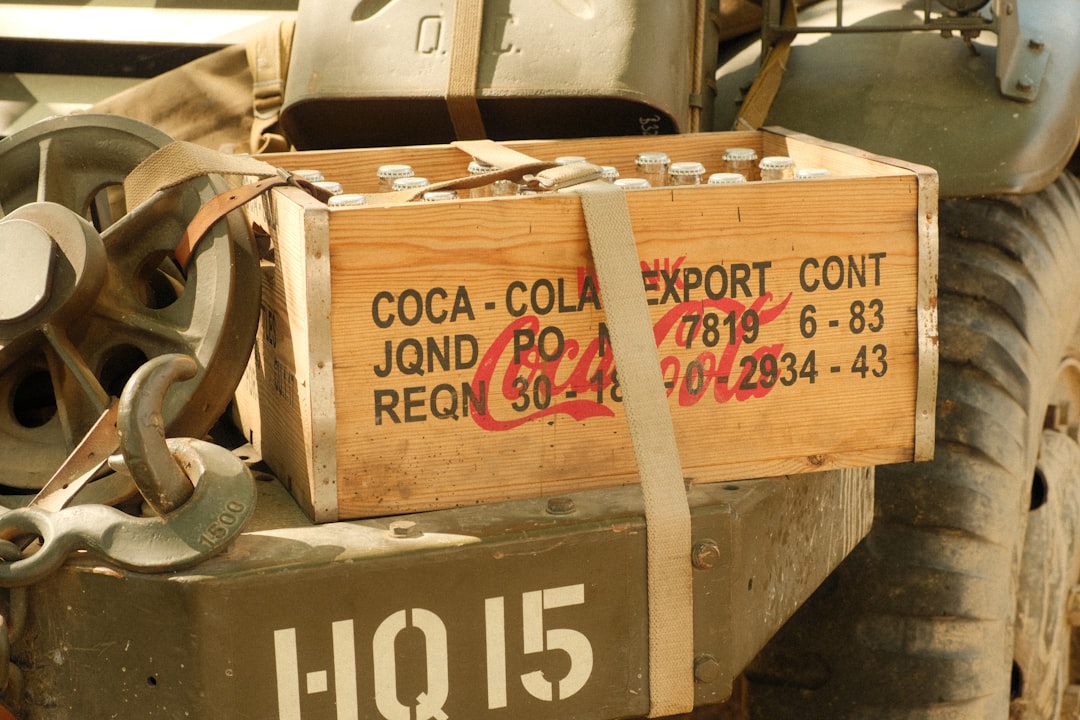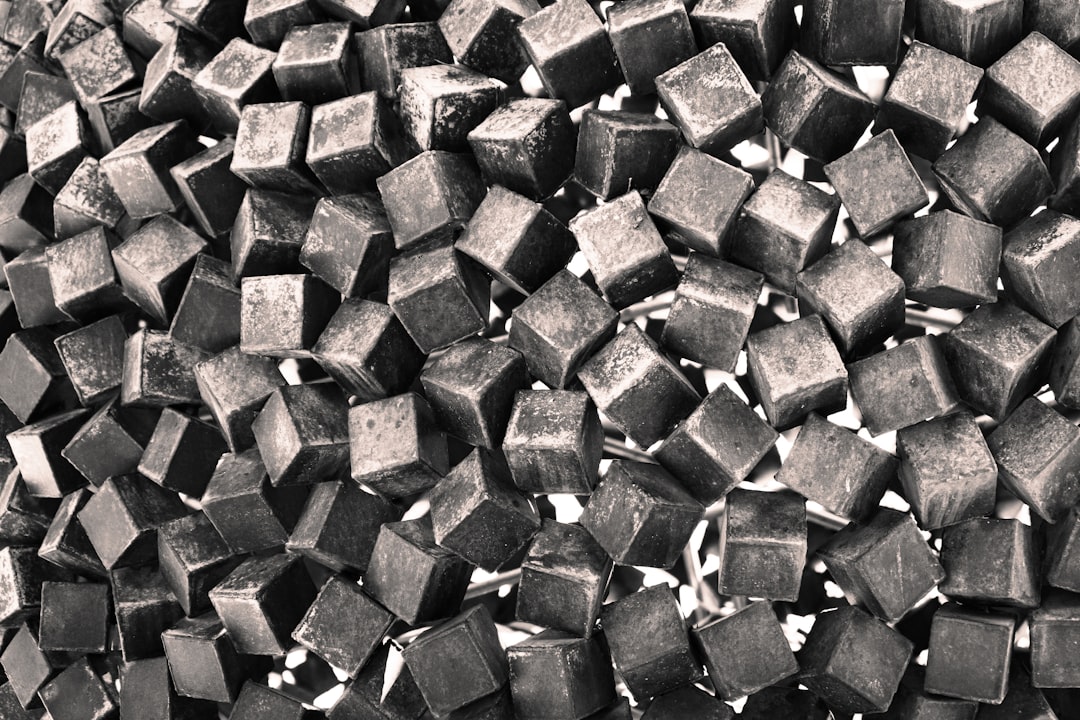

Engage prospects with a scan and streamline customer engagement with FREE QR code marketing tools by Sona – no strings attached!
Create a Free QR CodeFree consultation

No commitment

Engage prospects with a scan and streamline customer engagement with FREE QR code marketing tools by Sona – no strings attached!
Create a Free QR CodeFree consultation

No commitment
Carbide suppliers face increasing pressure to bridge the gap between in-person customer interactions and digital engagement. As buyers seek more instant access to technical data sheets, certifications, carbide materials comparison tools, and real-time inventory, traditional processes like print brochures and static catalogs slow growth and make it easy to miss high-value prospects, many of whom never enter a CRM or submit a form. The inability to quickly surface and track interested buyers in a crowded market often leads to lost opportunities and allows competitors to engage first.
Today's most effective carbide suppliers are leveraging QR codes to transform every touchpoint, including labels, shipping documents, trade show booths, and packaging, into interactive gateways. This shift enables transparent traceability and immediate access to resources, and it also identifies previously anonymous visitors while capturing their engagement in ways manual processes cannot. Instead of letting potential leads remain unknown or go cold, modern QR strategies help suppliers prioritize timely outreach and sync each interaction with sales and marketing channels.
QR codes unlock accelerated access, trackable engagement, and real-time insights for carbide suppliers and their clients. When deployed with intent and optimized for industry-specific workflows, these tools close crucial gaps in data, speed, and targeting, enabling measurable improvements across marketing, sales, and customer support channels.

QR codes provide a seamless bridge from physical product or collateral to digital resources, enabling carbide suppliers to replace paper-based catalogs, static emails, and manual inquiry forms with instant, measurable engagement. When buyers can scan and self-serve in seconds, they are far less likely to abandon their interest, as shown in this 900 signups case study. Engineering teams quickly find the latest MSDS and technical sheets; procurement teams can verify certifications without emailing support, and field reps can capture leads in real time without relying on error-prone handwritten forms.
The most successful deployments begin with precise intent. Decide what business outcomes matter most, then map QR codes to the physical surfaces your buyers already interact with. In carbide supply, that usually includes packaging for inserts and wear parts, crate labels for export shipments, trade show signage, sample kits, invoices, and delivery notes. Each code should lead to a task-complete experience such as a pre-filled RFQ form, live inventory lookup, or a filtered library of technical documentation for a specific grade or geometry.
By replacing slow, manual workflows with QR-enabled processes, carbide suppliers close the gap between early interest and timely, data-driven conversion. QR codes support every phase of the customer journey, from first inquiry to post-sale support, while generating the data needed to prioritize high-intent accounts and shorten sales cycles.

Carbide suppliers operate in an environment where the stakes are high and the details matter. Buyers need confidence in grade selection, tolerance, and tooling compatibility, and they expect to retrieve documentation instantly. Historically, much of this information was locked in printed binders and static PDFs that were hard to discover and out of date. QR codes remove these frictions by connecting physical touchpoints directly to digital actions that meet buyer needs in seconds.
Consider the many physical artifacts in carbide supply that reach customers daily: appointment cards for technical consultations, invoices, packing slips, crate labels, and sample kits. Each item is an opportunity to move buyers to the next step. With QR codes, a crate label can open a shipment tracker and certificate portal, an invoice can launch a reorder workflow, and a sample kit can deliver application notes and tool setup videos. Every scan becomes an engagement you can measure and act on.
Adding QR codes to appointment cards, invoices, and packaging materials unlocks faster information delivery, smoother compliance, and clearer path-to-purchase visibility for both buyers and suppliers. In a market where timing and accuracy win deals, QR codes give carbide suppliers the edge.

QR codes can be configured to launch the precise action a carbide buyer or operator needs. Whether the goal is a quick RFQ or a deep dive into a spec library, the format should match the job to be done. For busy plant managers and field engineers, that often means immediate access to documentation or a one-click path to support. For purchasing teams, the priority might be supplier verification or reorder flows.
Dynamic QR codes are usually the best fit for carbide suppliers because content destinations change frequently as inventory, certification status, and application guides are updated. Dynamic codes also provide granular analytics, which is invaluable for measuring event ROI and understanding buyer intent. That said, static codes can still be useful for permanent signage or timeless content, such as a general contact card.
Dynamic QR codes managed through Sona QR centralize control over destinations and tracking. As a result, you can version experiences by channel and audience without changing the printed code.

Carbide suppliers should place QR codes anywhere buyers interact with your brand offline. The biggest opportunity is to convert untracked moments into measurable engagement. Trade shows are an obvious candidate, but do not overlook the daily journey of your products and paperwork. Labels, crates, inserts, catalogs, and delivery documents are all high-traffic surfaces that can carry QR-enabled prompts to the right next action.
Start by mapping the physical lifecycle of your products and sales materials. Identify where buyers need information, where friction stalls progress, and where your team currently loses visibility. For each touchpoint, define a destination that makes the next step effortless. When every code serves a useful purpose, scan rates rise naturally.
When deployed across these common surfaces, QR codes deliver measurable lift in inbound inquiries, document downloads, and qualified pipeline. The data also highlights where to place your next budget dollar, since you can see which offline assets are driving digital action.

QR codes shine when they remove friction that prevents buyers from taking the next step. In carbide supply, that often centers on documentation, verification, and quoting. By making these actions instant, you reduce time to value and capture interest while it is hot. The following use cases have proven particularly impactful:
By anchoring these use cases to the buyer journey, suppliers move from reactive lead management to proactive enablement. You capture previously anonymous intent, attach it to accounts, and accelerate conversion with helpful, context-aware experiences.
Every scan is a signal, and not all signals are equal. A scan on a trade show banner suggests early research, while a scan on a delivery slip implies post-purchase engagement or reorder intent. Carbide suppliers can use these differences to segment audiences and personalize outreach. With Sona QR, each code can carry tags for location, placement, product line, and journey stage, then sync those tags to your CRM and ad platforms.
The goal is to transform momentary curiosity into an ongoing conversation that reflects what the buyer has already told you through their actions. Segmenting by intent and context keeps your follow-up relevant. It also ensures scarce sales time prioritizes the accounts most likely to convert or expand.
With this approach, remarketing is based on real behavior instead of assumptions. You will nurture the right buyers with the right message at the right time, improving conversion rates and reducing wasted spend.
QR codes connect the dots across your print, event, packaging, and digital programs. When every offline asset can drive a trackable digital action, you unlock continuity in the buyer experience. Prospects no longer hit a dead end when they leave your booth or close a brochure. Instead, they follow a guided path to the next task, and you receive the data needed to optimize that path.
The key is to plan QR destinations as part of your broader campaigns. Align the message on the physical asset with the landing experience behind the code. Measure scan performance alongside web traffic, email clicks, and CRM activity to understand channel synergy. Sona QR centralizes this data and syncs it to your systems of record.
QR codes serve as the offline onramp to your digital marketing engine. With a centralized platform like Sona QR, you can manage all your codes, monitor performance, and feed scan data directly into CRM and ad platforms to inform and automate your next actions.
Many suppliers underperform with QR codes because they treat the technology as a novelty rather than a system. Success comes from aligning each code with a clear business outcome, designing for the scanning environment, and tracking results with the same rigor you apply to digital channels. The following checklist breaks down the essentials and adapts them to carbide supply workflows.
This step-by-step plan emphasizes practical decisions that speed time to value: choose one high-impact use case, deploy quickly where your buyers already look, and measure engagement so you can improve. Sona QR supports each step with dynamic destinations, scan analytics, and CRM integrations.
This checklist reduces guesswork and speeds iteration. The more you align codes with buyer tasks and measure the path from scan to conversion, the more revenue impact you will see from each campaign.
Proving ROI is often the toughest part of offline marketing. Printed catalogs, event booths, and packaging rarely tell you who engaged or what happened next. QR codes fix that by turning every scan into a data point. When paired with identity resolution and CRM enrichment, scans can be attributed to companies and opportunities, not just anonymous activity.
Sona QR captures granular scan data, while Sona.com connects those engagements to downstream outcomes like quotes, orders, and account expansion. This closes the loop between what happened in the real world and what shows up in your pipeline, which is essential for budgeting and prioritization.
By closing analytics gaps, suppliers deliver more timely outreach and make smarter bets on placements and messaging. Over time, the combination of scan data and revenue attribution becomes a reliable compass for growth.
Once your first QR campaigns are live, incremental improvements compound quickly. Focus on clarity of value at the scan point, frictionless landing experiences, and consistent data hygiene. The tips below align with the media and workflows most common in carbide supply and emphasize practical steps that raise scan rates and conversion.
Training your teams is just as important as the code design. Booth staff, drivers, and warehouse teams should know how to invite a scan with a short, benefit-focused statement. Buyers respond when they understand exactly what they get, such as instant MSDS access, a fast RFQ, or verified certificates.
Highly tailored QR campaigns enable carbide suppliers to diagnose hidden signals, measure real demand, and act on growth opportunities as soon as they appear. The teams that improve fastest are the ones that instrument, test, and learn continuously.
QR codes have become essential in carbide supply, enabling every product, document, or event interaction to spark a measurable digital journey. For carbide suppliers, this means overcoming challenges like missed high-value prospects, delayed or disconnected follow-up, and wasted spend. By uniting offline and online signals, QR not only accelerates lead capture but also empowers smarter segmentation, more consistent messaging, and a fully trackable funnel.
For carbide suppliers seeking to differentiate in a demanding market, QR code adoption offers more than convenience. It delivers strategic value. By addressing the frustration of missing top prospects, lacking visibility into buyer intent, and losing momentum from analog processes, QR codes empower suppliers to modernize workflows, route leads with precision, and turn every engagement into actionable data. The result is minimized lost opportunity and newfound agility in segmenting audiences, nurturing fit leads, and creating real business impact from every interaction.
If you are ready to close the gap between traditional sourcing and data-driven growth, start with one high-impact use case such as trade show RFQs or packaging-linked documentation. Start creating QR codes for free, connect Sona.com for attribution, and experience how fast a single scan can become a qualified conversation and measurable revenue.
QR codes have transformed the carbide suppliers industry by turning traditional product catalogs and technical data sheets into interactive, measurable engagement points. Whether it’s streamlining access to detailed product information, enabling quick reordering, or enhancing customer support, QR codes replace cumbersome processes with instant, mobile-friendly solutions that drive efficiency and customer satisfaction. Imagine your clients instantly accessing up-to-date specs or ordering history with a simple scan—empowering them while boosting your operational agility.
With Sona QR, you can create dynamic, trackable QR codes tailored for carbide suppliers in seconds, update campaigns on the fly without costly reprints, and connect every scan directly to actionable insights. This means smarter inventory management, improved customer retention, and a clear line from engagement to revenue. Start for free with Sona QR today and transform every scan into a seamless customer experience and a powerful growth opportunity.
QR codes enable carbide suppliers to provide instant access to technical data, certifications, and inventory, improve lead capture, track engagement, and connect offline touchpoints to digital workflows for measurable sales and marketing impact.
Carbide suppliers should use dynamic QR codes for flexibility, analytics, and content updates, while static codes are suitable for permanent signage with stable content; selecting codes by placement and use case improves measurement and optimization.
Suppliers should place QR codes on product packaging, crate labels, trade show signage, sample kits, invoices, delivery documents, brochures, and direct mail to convert physical assets into interactive, trackable digital touchpoints.
QR codes capture previously anonymous buyer intent, sync engagement data to CRM systems, enable timely and relevant follow-up, and shorten sales cycles by providing seamless access to quotes, documentation, and support.
Suppliers should define clear business goals, choose high-impact placements, design codes for easy scanning with clear calls to action, use a centralized platform for management and analytics, and continuously track and optimize based on scan data.
By tagging QR codes by role and use case, suppliers can segment audiences such as procurement, engineering, or maintenance teams and deliver tailored resources like verification portals, technical guides, or troubleshooting videos.
QR codes can link to web landing pages, live inventory lookups, RFQ forms, technical data sheets, MSDS, compliance certificates, application videos, supplier contact cards, and reorder workflows.
Success is measured by tracking scan volume, location, device, and timing data, correlating scans with downstream actions like quote submissions and orders, syncing data to CRM platforms, and analyzing conversion rates and revenue attribution.
Suppliers should place codes where buyers naturally look or handle, provide clear benefit-driven calls to action, educate staff to invite scanning, maintain code visibility and scannability, and use unique codes per placement for precise attribution.
QR codes replace static brochures and handwritten forms with instant, digital access to up-to-date documents, certifications, and inquiry forms, reducing lost leads and enabling real-time engagement without reprinting materials.
Use Sona QR's trackable codes to improve customer acquisition and engagement today.
Create Your FREE Trackable QR Code in SecondsJoin results-focused teams combining Sona Platform automation with advanced Google Ads strategies to scale lead generation

Connect your existing CRM

Free Account Enrichment

No setup fees
No commitment required

Free consultation

Get a custom Google Ads roadmap for your business






Launch campaigns that generate qualified leads in 30 days or less.
